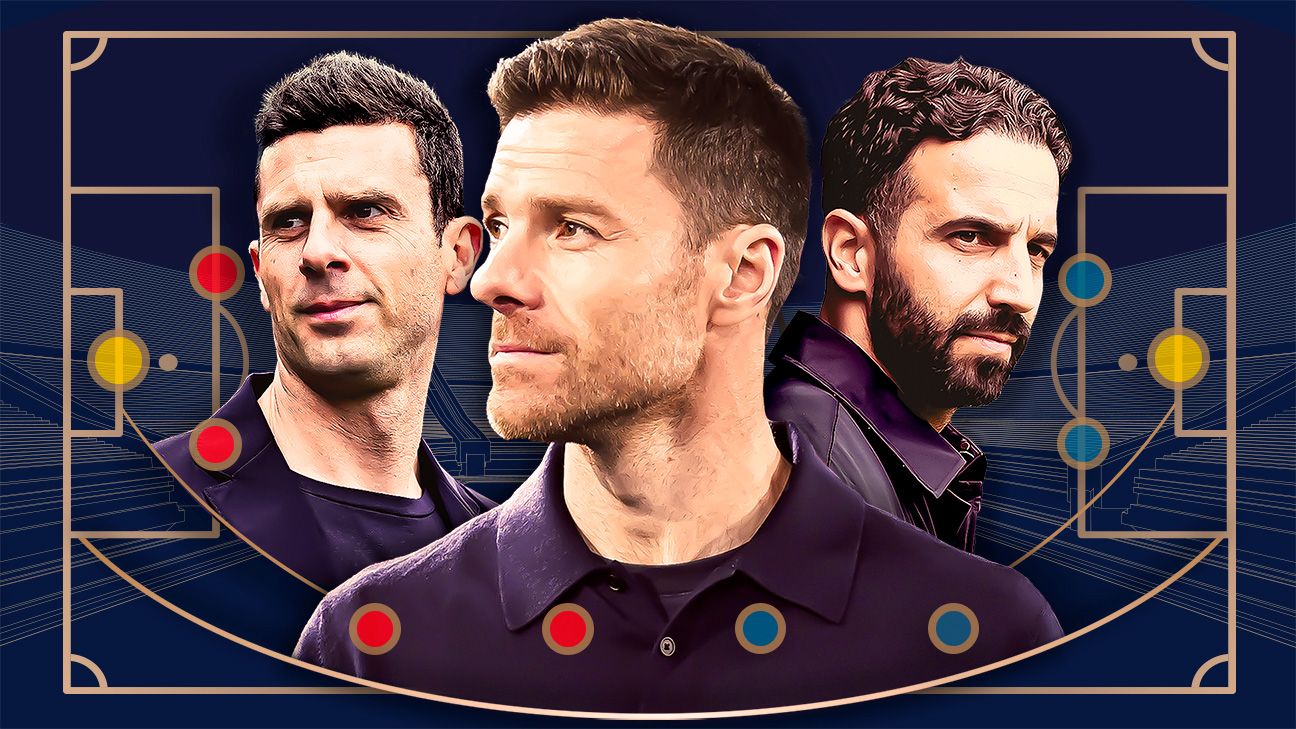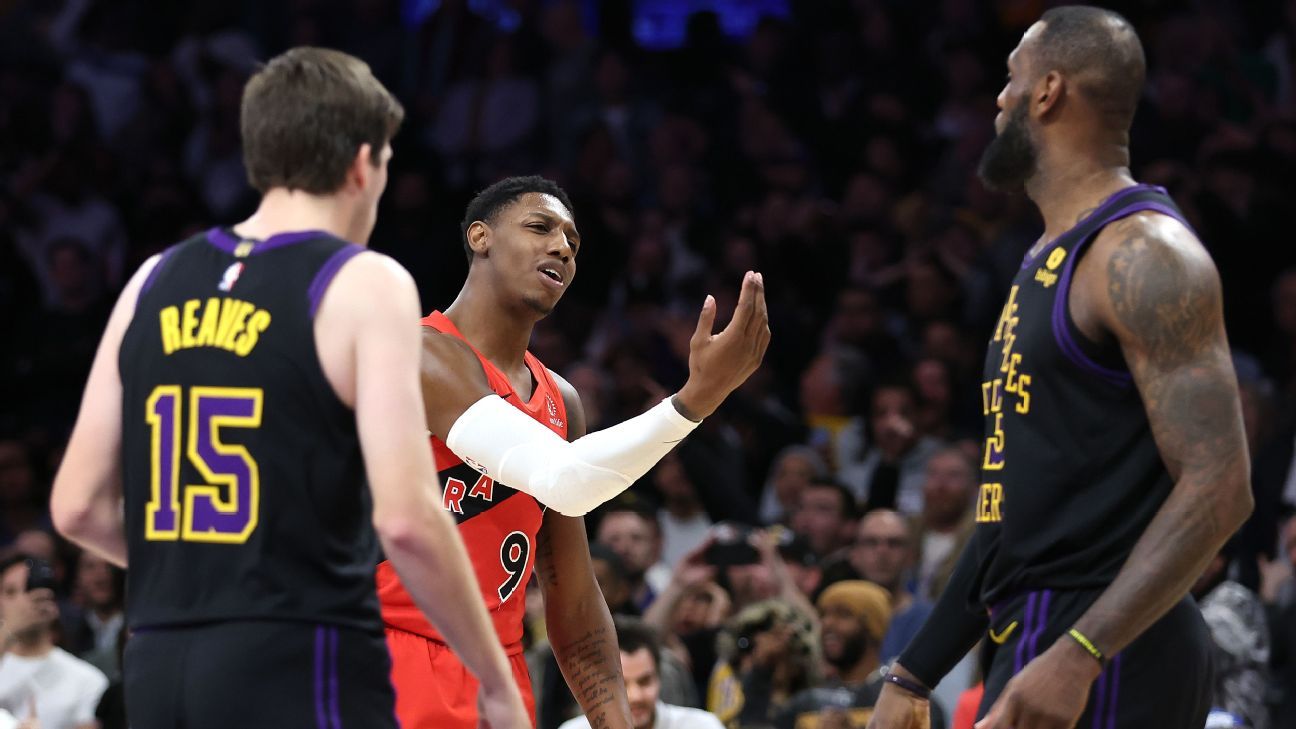Grant Home is a named plaintiff in arguably probably the most consequential antitrust lawsuit in faculty sports activities historical past. Grant Home can be a swimmer, a latest graduate of Arizona State who served as a key piece of this system’s emergence as a nationwide championship contender and nonetheless trains with the Solar Devils as a post-grad.
And therein lies the awkwardness of Home’s present predicament. His identify is shorthand for the three antitrust instances (Home v. NCAA, Hubbard v. NCAA and Carter v. NCAA) that the NCAA and energy conferences are within the means of settling. The settlement can pay out roughly $2.8 billion in damages and arrange a revenue-sharing mannequin by which colleges could pay as much as $20 million on to their athletes per 12 months. As athletic departments nationwide brace for the brand new value of doing enterprise, a variety of athletic administrators and commissioners have already alluded to essential cost-cutting measures. For some colleges, that can embrace dropping Olympic sports activities that don’t drive income for the athletic division … like swimming.
Home didn’t reply to interview requests for this story. His coach Bob Bowman mentioned he revered Home’s proper to contain himself within the lawsuit and that Home wished to play a job in one thing greater than himself.
“Grant is a superb individual,” Bowman mentioned. “And he was the perfect recruit we had at ASU within the early years. He was occupied with taking an opportunity on us as a result of we didn’t actually have a confirmed program — in order that was good. He’s technically fairly good (at swimming). He has a superb background. He’s a ahead thinker, and he’s a free thinker.
“I simply assume that he’s concerned in one thing now that may be a lot greater now than he thought it will be when it began.”
Certainly, it’s arduous to downplay the influence the settlement could have on non-football and non-basketball faculty sports activities. That’s why the unsure future of school athletics is so regarding to those that care about swimming — and different Olympic sports activities which have lengthy been supported and sustained by way of the NCAA mannequin. A lot has modified up to now few years, and an much more vital makeover is forward.
However what is going to that imply for Crew USA’s pursuit of gold?
Though Crew USA will put on swim caps adorned with American flags as a substitute of collegiate logos in Paris, the influence of the American increased training system isn’t removed from thoughts when the subject of Olympic swimming is raised. Locations like Stanford, Cal, Texas, Florida and Michigan have been incubators of expertise for school swimmers but additionally for individuals who select to coach as postgraduates after exhausting their NCAA eligibility.
“The faculty swim system is our secret sauce,” USA Swimming CEO Tim Hinchey mentioned. “Not solely can we practice our greatest swimmers to make our Olympic groups, however we practice our rivals world wide.”
A primary instance: French swimming star Léon Marchand would be the face of his residence Olympics this month in Paris; he skilled with Bowman first at Arizona State and now on the College of Texas. Examples like that abound in different Olympic sports activities. For post-grads, it’s usually the perfect or solely choice for elite coaching at top-of-the-line amenities — and with the game’s greatest coaches. These coaches cut up their time between their undergrad and post-grad teams, divvying up the amenities and apply occasions.
Greater than 1,000 present, former and incoming NCAA athletes will likely be competing in Paris, and it’s not solely the power-conference colleges centered within the Home case which might be sending athletes. The group contains athletes from 57 totally different conferences and all three divisions, with 37 Division II athletes and 10 from Division III. The athletes will signify 103 totally different nations within the upcoming Video games. (Swimming alone has athletes representing 67 totally different nations.)
“I get an enormous kick out of what number of worldwide student-athletes now we have, and I do smile after I take into consideration all these younger people who find themselves coming to us to grasp their craft after which go residence and compete towards us,” NCAA president Charlie Baker mentioned in a latest interview. “There’s one thing stunning about that. And I actually hope that no matter we do right here to cope with our present set of challenges and circumstances, we discover a option to proceed to make the U.S. the place the place younger people who find themselves nice performers in sports activities imagine that they’ll come and possibly win Olympic medals sometime.”
The proposed Home settlement would require the fee by the NCAA of the $2.8 billion in again damages to athletes who couldn’t revenue off of their names, photos and likenesses previous to 2021, in addition to the formation of a brand new revenue-sharing mannequin that permits colleges to immediately distribute to athletes as much as roughly $20 million per college, starting as quickly as fall 2025. (That greenback determine will improve barely over the course of the upcoming decade as a result of it’s calculated to be 22 p.c of the income introduced in by the typical power-conference college.)
Energy conferences are additionally within the means of deciding on roster caps for every sport; every college would then be allowed to supply as many scholarships to athletes because it wished, as much as the utmost variety of roster spots. There stay vital questions on how Title IX will apply within the new mannequin, significantly with the revenue-sharing distribution. However whereas they await readability, athletic administrators are working beneath the belief that they’ll nonetheless want to supply the identical variety of scholarships for each female and male athletes throughout the athletic division, as federal regulation requires them to do now. It’s fairly potential the roster cap for ladies’s swimming will likely be increased than males’s for that reason, as soccer gobbles up so many male-sport scholarships.
“A part of the problem for everybody at this time limit is that individuals wish to see the image of what it’s going to appear to be subsequent,” Baker mentioned. “Will (Division) I colleges redirect a whole lot of assets that may have gone one place to a different? Sure. I feel that’s a superb factor. However I don’t assume anyone has a transparent deal with on precisely the way it’s all going to play out.”
The USA is among the solely nations on this planet with no sports activities ministry (or division) inside its authorities and the one one at its aggressive degree that gives no authorities funding for its Nationwide Olympic Committee. The U.S. Olympic and Paralympic Committee (the USOPC) generates income by way of company sponsorships and media rights offers. And it doesn’t use its income to fund its sport pipelines at schools and universities.
Former legendary College of Georgia swim coach Jack Bauerle mentioned he thinks the USOPC should assist out what he calls its “minor league system.” For many years, the nation has celebrated its gold medals with out immediately funding the coaches and amenities that help the athlete improvement that’s essential to realize them. If it turns into dearer for colleges to try this along with supporting big-time faculty soccer and basketball, it’s honest to ask what number of will proceed to take action.
The richest athletic departments and colleges with storied historical past within the sport will possible proceed to totally fund elite swimming — there’s no want to fret about Texas or Michigan all of the sudden dropping their packages or chopping corners — however what concerning the tier under it? What concerning the different lots of and 1000’s of swimmers who dream about growing to change into adequate to make a nationwide staff? And what about those that won’t ever make it to that degree however fill out rosters of sports activities at sufficient colleges to permit for a real and aggressive nationwide championship? These nationwide championships permit for coaching schedules and annual construction. They create staff environments by which athletes practice and keep engaged. It might be tougher to coach elite-level swimmers with out them.
“We’re the feeder system for the Olympic Video games,” Bauerle mentioned. “One thing’s going to have to offer, as a result of if we lose that, we will likely be in large bother internationally. These different nations already had their programs in place. … I don’t see how our dominance in swimming might be continued at that degree until one thing occurs.”
The NCAA has been working with the USOPC on the problem. The 2 entities paired as much as kind the Collegiate Advisory Council, with a said mission to “strengthen and lead collaboration efforts to align our nation’s distinctive collegiate athletic panorama and the Olympic and Paralympic actions to help Crew USA’s collegiate athletes.” The group contains a handful of power-conference athletic administrators who should make their very own robust selections about sports activities sponsorship within the coming months and years.
Baker mentioned he does anticipate the problem of federal funding for Olympic sports activities to be broached in some unspecified time in the future.
“I don’t know when it’s going to flip to that or the place it’s going to go,” Baker mentioned. “It’s an advanced problem for the feds for one million causes.”
However he understands the significance of the subject, and Baker stays optimistic that colleges making selections about their monetary futures will nonetheless discover worth in sponsoring Olympic sports activities that stay essential to their missions and id and entice each home and worldwide athletes. Merely put, you will need to create pathways for athletes to the largest world stage. And it’s going to be significantly vital for the U.S. to be well-positioned heading into the 2028 Summer season Olympics in Los Angeles.
“The Olympics, on the finish of the day, is a showcase of alternative for every nation that participates to point out the product of the grit and the grind and the work,” Baker mentioned. “And there are all the time moments that come out of the Olympics which might be distinctive and final for many years. I’m sufficiently old to recollect Bob Beamon and his 29-foot lengthy soar in Mexico Metropolis in 1968. That was additionally the identical Olympics the place the sprinters Tommie Smith and John Carlos put their fists up throughout the ceremony.
“The Olympics are a world stage on which nations and athletes have an opportunity to carry out, and it has all people’s consideration. … There’s a ton of labor and a ton of assets related to getting from right here to there, however it’s actually distinctive, and it is extremely iconic. In the long run, many of the messages that come out of it are enormously optimistic.”
So, how can the Olympic motion maintain its success in a future by which key events’ monetary incentives could change? It’d require outside-of-the-box considering.
Victoria Jackson, a sports activities historian at Arizona State, says that is the time for every sport to assume arduous about its objectives and usages inside the collegiate mannequin. For therefore lengthy — largely to defend its stance towards paying soccer gamers — colleges and the NCAA have operated like all athletes and all sports activities are the identical. However they’re not.
“We have to have traditionally vital change occurring domestically inside the best way we design the American sports activities ecosystem,” Jackson mentioned.
She suggests a shift extra towards the membership mannequin that exists in different nations, which may totally separate faculty soccer from different sports activities, untethering it from increased training and permitting elite gamers to advance by way of ranges within the sport with out it affecting convention affiliation or journey prices for the opposite sports activities in college athletic departments.
Jackson mentioned over the 5 years earlier than the pandemic, head-coaching salaries in Olympic sports activities elevated by 43 p.c, even if the income within the respective sports activities didn’t improve by that very same quantity. As she places it, it was faculty soccer paying for the Olympic and Paralympic improvement. That monetary mannequin is now altering, with fewer causes to put money into a sport that isn’t bringing in more cash than it prices.
“It’s arduous to get folks to be excited a couple of future the place we admit that we had been residing past our means,” Jackson mentioned. “It’s going to must look extra like what we all know to be scholastic sport going ahead — native and regional competitors, decrease budgets. The emphasis on successful doesn’t go away when your budgets are diminished, like athletes nonetheless wish to win and coaches nonetheless need them to be the perfect that they are often.
“However I do assume there’ll should be a recalibration of what this expertise will likely be for athletes who’re attempting to be the perfect that they are often of their respective sports activities, and that’s a tough actuality.”
(Grace Hollars / IndyStar / USA Right this moment)
Every time Kate Douglass entered Lucas Oil Stadium to compete at U.S. Olympic swim trials, she confronted herself. Effectively, she technically confronted her face — which stretched a number of tales throughout the primary entrance to the soccer stadium, greeting attendees and her would-be rivals alike.
“Once I noticed that I used to be like, ‘Oh, wow, I actually need to make this staff,’” Douglass mentioned. “It was undoubtedly scary simply because I knew lots of people had expectations for me.”
That they do. Douglass will likely be — actually and figuratively — one of many faces of the U.S. swim staff in Paris. The previous College of Virginia star will swim the 200-meter breaststroke and the 200-meter particular person medley there, along with the ladies’s 4×100-meter freestyle relay and the ladies’s medley relay (with maybe the combined medley relay in addition). And she or he’ll be joined by a handful of UVA teammates, together with sisters Gretchen and Alex Walsh in addition to Emma Weber, a shock Olympic qualifier within the 100-meter breaststroke. The American ladies will likely be led by head U.S. ladies’s coach Todd DeSorbo, who can be the pinnacle swim coach at UVA.
In the meantime, the American males will likely be coached by College of Florida head swim coach Anthony Nesty, who trains a who’s-who of previous and current Olympians (Katie Ledecky, Caeleb Dressel, Bobby Finke and extra) in Gainesville, Fla. These appointments aren’t accidents; USA Swimming is strategic about choosing head coaches who function private coaches for a superb portion of the roster to assist maximize the potential for fulfillment. And Virginia and Florida are epicenters for the game proper now.
That setup is each the purpose of the college-to-Olympics pipeline and an enormous profit of getting the entities so intently linked. Though no one expects these particular packages to chop their elite swimming packages, roster caps may shrink their sizes. Colleges with related athletic division budgets however much less historic success on this explicit sport could make the tough selection to chop this system altogether.
If the variety of schools that sponsor the game lower and there are dramatically fewer scholarships out there for swimmers, would that depress participation in swimming golf equipment, which many younger swimmers be a part of with the first objective of incomes a free trip to school? Would the “secret sauce” nonetheless work? It’s straightforward to get buried in such questions and anxieties. At the same time as Paris and its glimmering gold medals await within the coming days and weeks, these existential questions stay.
“The most important concern is for down the street,” Baurle mentioned. “We now have loved a lot success — you’ll be able to return Olympics after Olympics after Olympics. We’ve been the golden little one. We’ve introduced again probably the most medals, probably the most golds. And abruptly, we’re in a spot the place this might be now put in jeopardy, and that’s a scary factor.”
(Picture: Sarah Stier / Getty Photos)

























